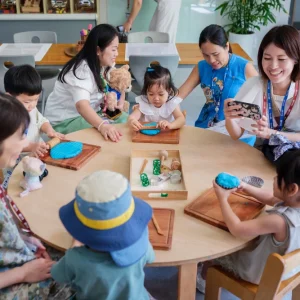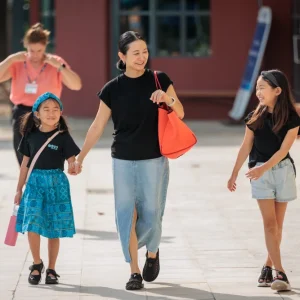In the world of education, learning beyond textbooks is vital for well-rounded student development. This article explores co-curricular activities, a cornerstone of well-rounded student development.
We will delve into the definition of co-curricular activities and highlight their numerous benefits for academic achievement, personal growth, and social skills. We will also explore examples of these activities offered in various educational settings.
What are Co-Curricular Activities?
Co-curricular activities run parallel to a school’s regular academic curriculum as additional activities designed to enhance students’ learning experience. These often happen during the school day, allowing students to gain a deeper understanding of concepts explored in class or put into practice their theoretical knowledge in real-life situations.
Co-curricular activities do not earn credits nor are graded based on core subjects but promote an all-rounded learning environment besides classroom instructions.
The available co-curricular activities in school will depend on various factors such as resources, faculty competence, and student interests.
Common types of co-curricular activities include:
- Arts and Culture: School choirs, orchestras, theatre productions, visual arts clubs, and literary magazines.
- Science and Technology: Robotics clubs, science fairs, and environmental awareness groups.
- Leadership and Service Learning: Student government, debate teams, and volunteer programs.
- Academic Clubs: Subject-specific clubs can delve deeper into specific academic areas in the main curriculum.
- Sports Activities: Basketball, track and field, swimming, soccer, and gymnastics.
Advantages of Co-curricular Activities
Participating in co-curricular activities can highly influence student development. Let’s look at them in more detail:

Co-curricular activities have numerous benefits apart from an academic focus, which places more emphasis on building social and interpersonal skills.
- Relationship Building: Students can make new friends through participating in co-curricular activities, fostering friendships, and building positive relationships with peers.
- Collaboration and Teamwork: The majority of co-curricular activities involve working as a team towards a mutual objective. This helps them build collaboration skills such as respecting others’ ideas, compromising, and working efficiently together.
- Communication: Co-curricular activities provide a platform for students to train in clear and straightforward communication. They develop their skills of expressing themselves well, actively listening to others as well as constructive conflict resolution.
- Conflict Management: Co-curricular activities can sometimes involve misunderstandings or competition. By doing so, students learn how to devise suitable ways of solving problems or find a solution that suits all parties involved without fighting.
- Leadership: Students can take on roles that involve motivating others, delegating tasks, and making decisions. This experience helps them develop leadership qualities such as confidence, responsibility, and initiative.
Examples of Co-Curricular Activities
It is important to explore the six different types of co-curricular activities that exist within the syllabus structure to engage more deeply with the modern educational landscape.
1. Literary and Cultural Activities
Literary and cultural activities help students improve their literary skills and cultural understanding. These include debates, subject-specific clubs, school magazines, dramatics, study circles, story writing, seminars, recitations, poetry symposiums, and library work.

Objectives:
- Develop language skills and vocabulary.
- Improve articulation, expression, and communication.
- Provide opportunities to showcase hidden talents and build self-confidence.
Organisation Guide:
- Student interest should guide activity selection.
- Activities should cater to diverse interests and allow maximum participation.
- Teachers can offer guidance in planning and organisation, empowering student leadership.
- Activities can be integrated into the school schedule or held during holidays.
- Clear objectives, proper planning, and resource allocation are crucial for success.
2. Physical Development Activities
Physical development activities focus on promoting students’ health and well-being. These include indoor and outdoor games, athletics, mass drills, parades, and scouting programmes.

Objectives:
- Enhance physical development and psychomotor skills.
- Instil discipline, team spirit, and leadership qualities.
- Foster social interaction and positive character development.
Organisation Guide:
- A variety of games and sports should be offered, catering to students’ age, abilities, and interests.
- Activities should be planned with consideration for both boys’ and girls’ needs.
- Divide students into groups to encourage participation and teamwork.
- Dedicate sufficient time slots within the school week for physical activities.
3. Aesthetic Development Activities
Aesthetic development activities help learners hone their sense of beauty and creative expression. These activities can take various forms, including music, dance, drawing, painting, sculpture, and drama.

Objectives:
- Cultivate an appreciation for the arts and foster artistic sensibilities.
- Provide opportunities for creative exploration and self-expression.
- Develop skills and techniques in chosen art forms.
Organisation Guide:
- Identify student interests and offer a variety of art forms to choose from.
- Organise inter-school competitions or exhibitions to showcase student work.
- Provide access to art supplies and dedicated spaces for practising.

4. Service Learning Activities
Service Learning activities cultivate social responsibility and encourage students to contribute to the betterment of their communities. These activities can involve volunteering, social service projects, and campaigns that address social issues.

Objectives:
- Instil a sense of civic duty and social responsibility
- Promote teamwork, collaboration, and leadership skills
- Raise awareness about social issues and inspire positive change
Organisation Guide:
- Partner with local NGOs or social service organisations for project opportunities.
- Organise fundraising events or awareness campaigns for chosen causes.
- Develop age-appropriate activities that allow students to contribute meaningfully.
- Reflect on the impact of social service projects on solidifying learning.
- Ensure activities are conducted ethically and respectfully toward beneficiaries.
5. Leisure Time Activities
Students engage in leisure time activities during free time for their general development. These may be individual hobbies such as stamp collecting or group activities such as photography clubs.

Objectives:
- Foster personal interests and talents.
- Provide opportunities for relaxation and stress relief.
- Encourage self-directed learning and exploration.
Organisation Guide:
- Schools can provide resources and spaces for students to pursue their hobbies, like photography clubs or dedicated areas for quiet reading.
- Organise workshops or guest speakers to introduce students to new hobbies.
6. Excursion Activities
Excursion activities involve organized student trips outside the school setting. These trips can be educational visits to museums or historical sites or recreational outings like picnics.

Objectives:
- Provide opportunities for experiential learning and real-world application of classroom knowledge.
- Foster social interaction and teamwork among students.
- Create lasting memories and a sense of community.
Organisation Guide:
- Secure necessary permissions and ensure student safety during the trip.
- Involve students in planning aspects like choosing destinations or fundraising for the excursion.
- Debrief students after the excursion to solidify learning and encourage reflection.
Values of Co-Curricular Activities
Having established the definition and different types of co-curricular activities in fostering well-rounded development, we can now delve into the specific values these activities cultivate.
Educational Value
Students can get practical knowledge of theoretical concepts learnt in class through co-curricular activities. For instance:
- Excursions and tours offer firsthand experiences in subjects like history, geography, and nature study.
- Debate and recitation activities enhance language fluency and expressive abilities.
- Dramatics can bring historical events to life, while student self-government allows for practical civics lessons. School magazines provide a platform for students to hone their writing skills by crafting compelling content.
- Organising and participating in school functions fosters organisational skills and leadership qualities.
- Project-based learning is another valuable aspect of co-curricular activities, providing direct learning experiences for students.
Social Value
Social cooperation is a fundamental skill for responsible citizenship, yet it can be challenging to teach solely through traditional subjects like languages, mathematics, or social sciences.

Co-curricular activities provide a platform for fostering social cooperation. Through collaborative endeavours, students develop a strong team spirit, a sense of unity, and the ability to cooperate effectively.
Civic Value
Co-curricular activities provide valuable training for good citizenship. Participating in group activities instils a sense of duty, as seen in student self-government initiatives.
The school environment also serves as a microcosm of society, and co-curricular activities should reflect this connection. These activities can cultivate qualities like initiative and leadership, which may not always be developed within the confines of the classroom.
Psychology Value
Co-curricular activities fulfil important psychological needs of students, particularly regarding social interaction. These activities provide an outlet for expressing personal behaviour and foster creative thinking.

In classrooms, these activities offer healthy and productive ways to channel student instincts – for instance, the instinct of curiosity can be constructively redirected through involvement with libraries or stamp/coin collecting clubs.
Additionally, they provide valuable opportunities to capitalise on students’ natural urges and drives, such as curiosity, competition, mastery, loyalty, and empathy.
Physical Development Value
While games, sports, and athletics directly contribute to a student’s physical development, other co-curricular activities provide a positive outlet for the body’s growth and development.
Physical activity is crucial for overall health, and co-curricular activities provide a structured and engaging way for students to participate in physical pursuits. These can encompass a variety of activities, from team sports to individual pursuits like dance or martial arts.
Cultural Value
Some co-curricular activities can deepen learners’ understanding of their cultural heritage. Events like drama, folk songs and dances, exhibitions, and religious observances are good opportunities for students to learn about their culture better. This encourages global cohesion while enhancing an awareness of one’s own national identity as well.

UNIS Hanoi’s Co-Curricular Programme goes beyond academics, offering a world of exploration for students.
From youth sports and drama productions to student councils and after-school activities, students develop teamwork, communication, and confidence and delve deeper into sports teams, honing discipline and sportsmanship.
This programme fosters a well-rounded individual.
- Educational benefits include exploring interests and discovering new talents.
- Socially, students build friendships and communication skills.
- Civic awareness is nurtured through leadership roles and community service.
- After-school activities expose them to diverse cultures, promoting cultural understanding.
- Physically, Youth Sports and team activities ensure healthy development.
- Psychologically, the program boosts self-esteem and resilience.
This holistic approach empowers UNIS Hanoi students to become responsible, globally-minded citizens.
Embrace Children’s Learning Environment with UNIS Hanoi’s Co-Curricular Activities
As explored, co-curricular activities offer a wealth of benefits alongside academic studies. They foster well-rounded individuals with transferable skills that equip them to succeed beyond the classroom.

UNIS Hanoi understands the transformative power of co-curricular activities. Our comprehensive program offers a variety of stimulating options, ranging from artistic pursuits and athletic endeavours to academic clubs and leadership opportunities. With this approach, we ensure that every student can discover their passions and cultivate their unique talents.
We invite you to learn more about how UNIS Hanoi can empower your child’s holistic development. Contact us today to schedule a tour and discover the vibrant learning environment that awaits.
Author Profile

- UNIS Hanoi is ever-evolving, but one thing that remains is our passion to nurture and equip students to be agents of change for a better world.
Latest entries
 Calendar, News and Publications30 Oct 2025What is an IB School? A Complete Guide for Parents
Calendar, News and Publications30 Oct 2025What is an IB School? A Complete Guide for Parents Calendar, News and Publications29 Oct 2025School Tour at UNIS Hanoi – A Comprehensive Guide for Parents
Calendar, News and Publications29 Oct 2025School Tour at UNIS Hanoi – A Comprehensive Guide for Parents Calendar, News and Publications28 Oct 2025How to Choose the Right School for Your Child: The 2025 Guide
Calendar, News and Publications28 Oct 2025How to Choose the Right School for Your Child: The 2025 Guide Calendar, News and Publications27 Oct 2025Student Recruitment at UNIS Hanoi: A Parent’s Comprehensive Guide
Calendar, News and Publications27 Oct 2025Student Recruitment at UNIS Hanoi: A Parent’s Comprehensive Guide